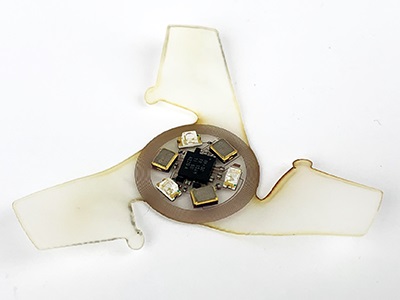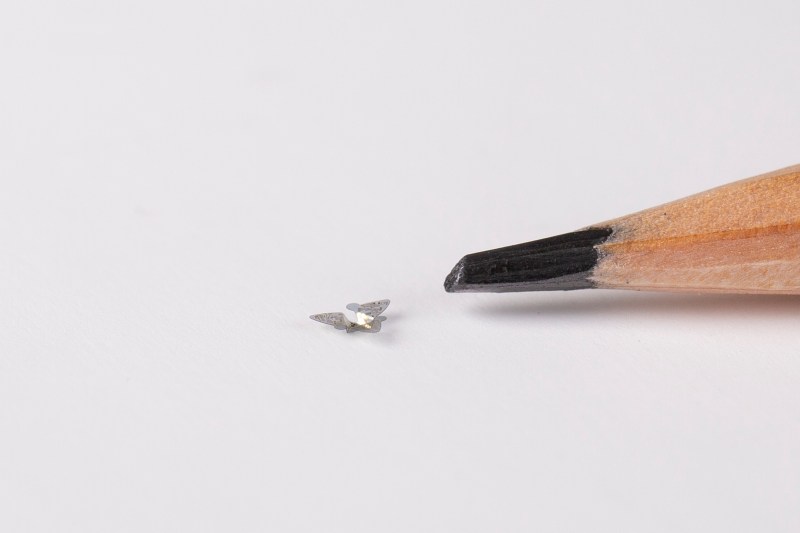Researchers at Northwestern University is moving the goalposts on how small you can make a tiny flying object down to 0.5 mm, effectively creating flying microchips. Although “falling with style” is probably a more accurate description.

Like similar projects we featured before from the Singapore University of Technology and Design, these tiny gliders are inspired by the “helicopter seeds” produced by various tree species. They consist of a single shape memory polymer substrate, with circuitry consisting of silicon nanomembrane transistors and chromium/gold interconnects transferred onto it.
Looking at the research paper, it appears that the focus at this stage was mainly on the aerodynamics and manufacturing process, rather than creating functional circuitry. A larger “IoT Macroflyer” did include normal ICs, which charges a super capacitor from a set of photodiodes operating in the UV-A spectrum, which acts as a cumulative dosimeter. The results of which can be read via NFC after recovery.
As with other similar projects, the proposed use-cases include environmental monitoring and surveillance. Air-dropping a large quantity of these devices over the landscape would constitute a rather serious act of pollution, for which case the researchers have also created a biodegradable version. Although we regard these “airdropped sensor swarms” with a healthy amount of skepticism and trepidation, we suspect that they will probably be used at some point in the future. We just hope that those responsible would have considered all the possible consequences.
















Considering the smallest camera and flat lens combination is smaller than a grain of rice and the same could be said for a comparable processor and transmitter. I’m just imagining thousands of these being dispersed into the upper atmosphere of a planet to take meteorological readings.
“Meteorological”, huh? ;) That’s one creative way of misspelling “surveillance” /s
Or “pollution” :)
Although I expect they’re mostly silicon. So it’s probably not even measurable against the silicon pollution that we already have. :P
Not sure if I would want one of these “flyers” in my lungs, though, with all those pointy edges.
The pollution of the future.
yep, nanopollution !
…to be eaten by cows, sheep and native wildlife. Perhaps they ought to call them Vl’hurgs.
At this size, you could easily use a very small hydrogen or helium balloon to be neutrally buoyant. Add a solar cell for recharging, and you could float for years before coming down if you wanted to.
How do you collect the data?
Make them segmented, use a tiny bit of piëzo-active material to make the segments move, and buff up the flyer so it reflects. Then shine a laser into their general direction. Make the flyers vibrate at specific frequencies, measure the reflection with a high-definition camera. Use a computer to detect, track, and follow the single specs, and readout a hundred of them at one time.
If they have a tiny ballon and are buoyant, the bottom-side of the flyer will always be turned towards the Earth. Maybe the wind would make them tumble, but just maybe it’s possible to come up with a shape that’s just aerodynamic enough to keep the bottom turned towards Earth most of the time.
Or maybe forget about the piëzo electric material, and actually make use of the natural tumbling motion. By varying the aerodynamics, it should be possible to make variations in the tumbling motion, which just might be detectable.
Something like that? :) Enough ideas for yet another PhD or two.
Pack a load of them into a cardboard tube rocket and launch it into a tornado. With temperature, pressure, and humidity/moisture sensors they could create a very accurate set of data about the structure of a tornado. Knowing their exact size, tracking with Doppler RADAR could be done very precisely.